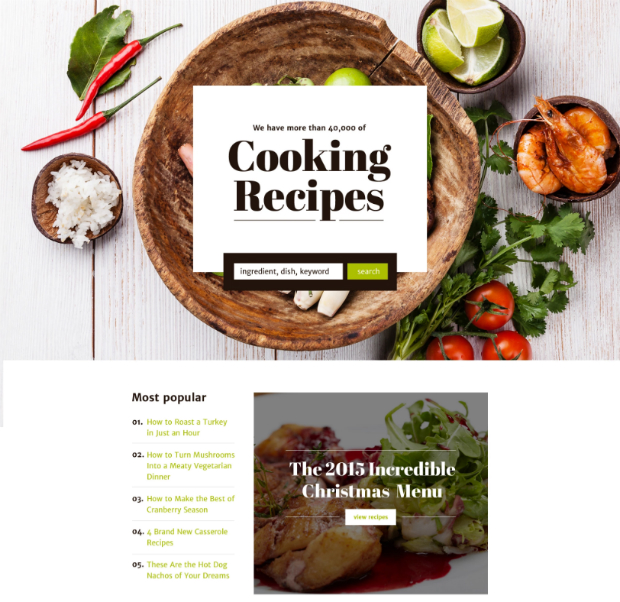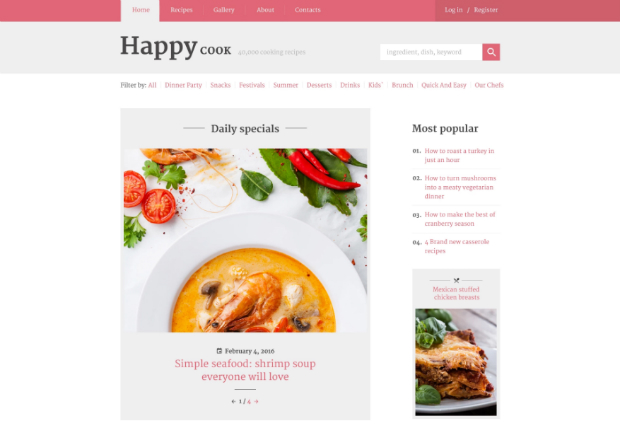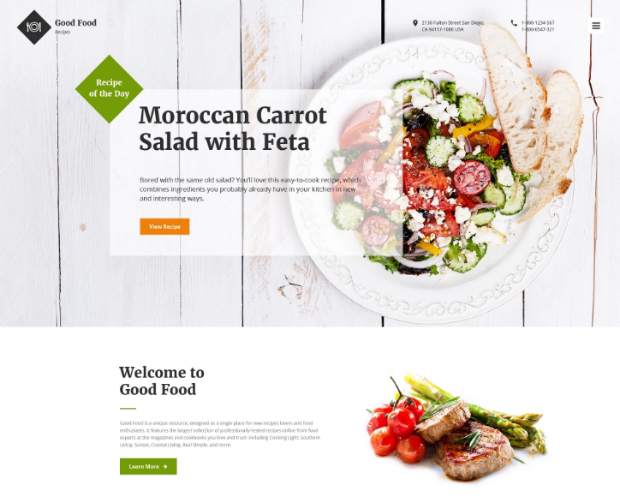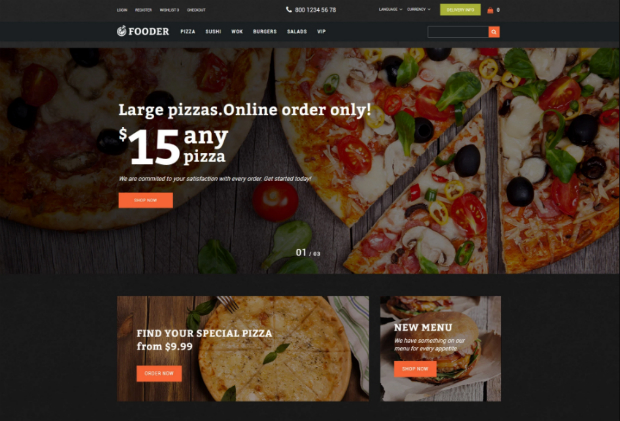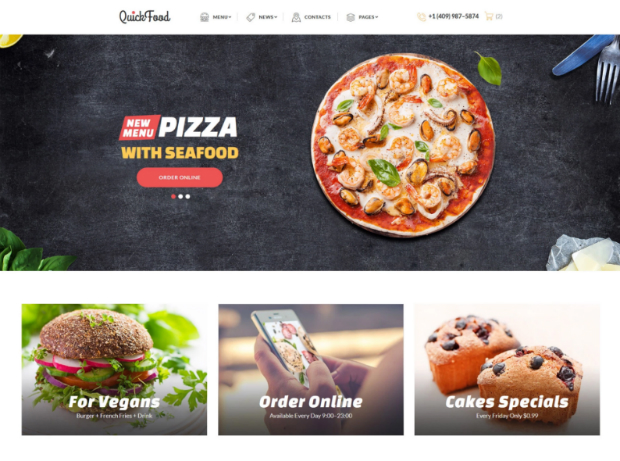Culinary today is not just a source of energy and nutrition for our body. It’s a real art. Many people choose food blogging to tell others about healthy eating habits, culinary traditions of different countries and nations, share their family cooking secrets and recipes. They may be professional chefs or amateurs. But all of them have a passion for cooking and wish to share this passion to others.
Food blog may be a perfect source of traffic for cafe or restaurant website. It can also be a great place for a chef to share his knowledge and get a great community of like-minded people. Creating a good food blog is not rocket science. When it comes to the initial stages of creating any blog or website, you will need to look into sites like www.hostiserver.com to find the right hosting provider for you and most importantly, to allow your blog to go live on the internet. You won’t go far with your website without one, no matter how good it looks. Once this is all in place, you can get inspiration from blogs of many famous chefs like Jamie Oliver or Anthony Bourdain. And in this article we will tell you how to start a food blog.
Establish your goals
Before choosing a website design, or speaking to a Web Design Company, you should carefully consider your main goals. Why you wish to create a food blog? What you will pose here: family recipes, catchy stories about foods you tired during your travels or some cooking tips for those who wish to shed some pounds?
Cooking Recipes Landing Page Theme
If you’re a professional cook, you may wish to share your recipes, haute cuisine tricks, and promote your own services. Amateur cooks may post recipes of home-made dishes. Try to find your niche or provide a unique idea. Like Julie Powell who was some kind of a pioneer of food blogging and even predated WordPress in 2002 with her Julie/Julia Project based on Julia Child’s famous cookbook.
Choose a user- and mobile-friendly design
Speaking about WordPress, a good blog should be based on a solid blogging platform and have a catchy and user-friendly design. There are multiple food templates available. Choose the one that offers an intuitive navigation, easy maintenance, inviting to the eye. A good food blog theme should be responsive to allow your users to read your posts even on their smartphones.
Add your contact info to help people contact you, install commenting widget to allow users share their cooking experience and opinion about your recipes.
Set up SEO Properly
Optimising your food blog for search engines is one of the essential tasks. In short, you should make your blog noticed by search engines like Google, Bing etc. Having your website on top of SERP means higher traffic to it, more visitors and growth of community around it.
The trick here is that search engines cannot taste your dishes or evaluate their wonderful photos. You have to make your texts SEO-friendly. Choose themes that allow setting up such vital components like page title, keywords, META descriptions, URLs and other attributes to make them visible to search engines. You also may want to look into how meta search engines would work in regards to SEO.
Stick to Visual Forms
Images and videos play vital part in food blogging. Photos help showing the step-by-step process of cooking. Beautiful photos of a ready dish appeal to users and attract their attention.
Try to use your own photos – they increase trust to you as a cook and to your blog. Pay attention to the details and main points that make your dishes look appetizing. Use big serving plates with lesser portions of food to make your dish more appealing. White plates help concentrating all the attention to the food and perfectly fit any website design. You can also choose a trendy black or wooden background that create a deeper and warmer ambience.
Multipurpose Cooking Blog Template created by TemplateMonster.
You can implement the color psychology and create a website based on the most “tasty” and “appetizing” color palette in red, orange, green and yellow tones.
Add a bit of interactivity
Modern website themes have amazing functionality that helps creating pages where users can perform some activities besides just clicking and scrolling. Not to mention simple sliders, carousel galleries and parallax effects. These are great functions of a website design that can be introduced to give your site additional flair.
Many themes offer attractive designs where users can play with separate elements. Thus, the design below allows users create their own pizza with a few clicks. It’s a easy-to-add functionality that will help you attracting visitors and make them your loyal readers.
Interactive Website Theme for Pizza Restaurant
Engage with users on social media
Social networks today are the most visited pages on the Web. You should establish your own presence (and your website, of course) on the major social networks like Facebook, Instagram, Twitter etc.
Pay more attention to visually-oriented networks like Instagram, YouTube or Pinterest. It will be easier to attract people to your blog from these social platforms. Make sure your website has social media plugins and sharing widgets to allow visitors share your posts to social media.
Restaurant functionality
If you run a food blog as a part of a cafe or restaurant website, make sure the website has additional functionality that allows your visitors to get the info about your working hours, location etc.
Add a page that allows your visitors to look through the menu that your place offers. Create an online reservation form that allows users to book a place at your restaurant or order a pizza online. Well-thought out and working without fails, such a form will make a great user-friendly addition to your website.
Installing all this stuff to a website may be a bit brain-twisting and time-consuming for a restaurant owner. In this case, you don’t have to do it all by yourself. There are many online service centers that can help you with this task. And you can launch a website in no time.
